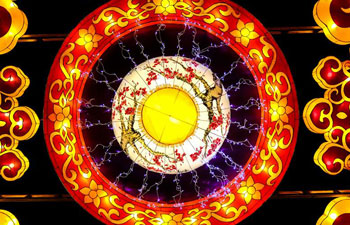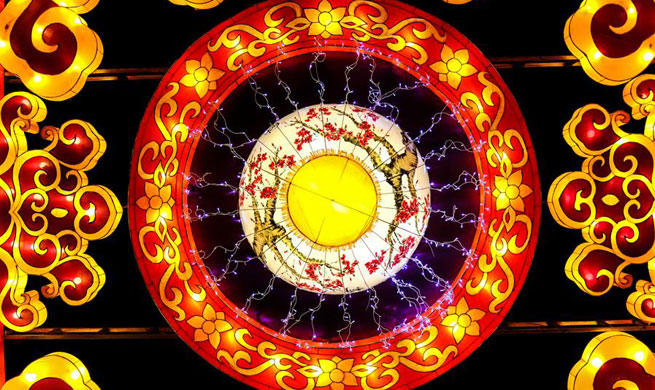JERUSALEM, Feb. 8 (Xinhua) -- A rare and beautiful Roman mosaic dating back to the 2nd or 3rd Century BC was discovered in Israel, Israel Antiquities Authority (IAA) announced Thursday.
The dig in the ancient Mediterranean port city of Caesarea first uncovered part of a large opulent Byzantine-era building dating back to 1,500 years ago, the IAA said in a statement.
Under the imposing structure, however, the archeologists found a spectacular mosaic of rare high quality from an even earlier building dating back to about 1,800 years ago.
Scholars believe that the building was part of an agora, a large public space for commerce and socializing in ancient times.
The colorful mosaic, measuring about 3.5 by 8 meters, bears three male figures, multicolored geometric patterns and a long inscription in Greek, which were damaged by the Byzantine building above it, according to Peter Gendelman and Uzi Ad, directors of the excavation for the Israel Antiquities Authority.
They said the three figures all wear togas and apparently belonged to the upper class. The central figure is frontal and the two others face him on either side.
If the mosaic was part of a mansion, the figures may have been the owners. If this was a public building, they might have represented the donors of the mosaic or were members of the city council, they added.
This rare mosaic was executed at a very high artistic level, with the images depicted using small, densely-placed tesserae, with about 12,000 stones per square meter, said Jacques Nagar, the head of IAA's Art Conservation Department.

















